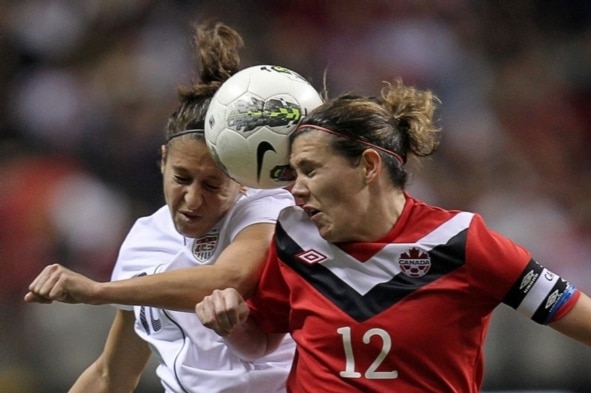Footballers may be at increased risk of dementia due to the brain trauma caused by repeatedly heading the ball
In an average game of football a player heads the ball between 6 and 12 times, over a 20 year career that’s almost 2000 times. While some of these hits will end in spectacular goals, all of them will count as a knock to the head.
The link between contact sport and long – term neurodegeneration was first observed in boxers and was known as “punch drunk syndrome”. Since then similar conditions have been reported in American football players. Football was never really considered as a high risk sport because players are very rarely knocked unconscious during play.
Amongst the general population CTE occurs at about a 12% rate … so the prevalence in these ex-football players is unusually high.
It wasn’t until a man bought his father, an ex-football player suffering from advanced dementia, into the Old Age Psychiatry service in Swansea, that the role of football in dementia was considered. The son asked Dr. Don Williams, the consultant psychiatrist, whether his fathers’ years spent heading the ball as a poweful centre-half, could be responsible for his dementia.
Dr. Williams was intrigued by this hypothesis and started to look for dementia patients with a long history of playing football. He recruited 14 patients who had an average of 26 years playing football (13 were professional and 1 was a very committed amateur who played every season for 23 years). The average age of dementia onset in these patients was 63.6 years. He monitored these men regularly until they died and collected demographic and clinical data as well as information about their play and concussion history from close relatives.
The next-of-kin for six of the men also gave for permission for post-mortem brain examination. Four of the six were found to have the condition Chronic Traumatic Encephaly (CTE) a degenerative disorder, common in boxers. It is caused by repeatitive, yet mild brain traumas. Clinically CTE is characterised by mood and behavioural changes, memory loss, executive dysfunction, slurred speech and Parkinsonism.
Furthermore, all the players with signs of CTE also had signs of Alzheimer’s disease. Although the two diseases are distinct, they do seem to be related as they have similar clinical characteristics and both diseases involve the build up of an insoluble form of the tau protein.
Football is the world’s most popular sport and even amateur players could be at risk of neuronal damage.
Amongst the general population CTE occurs at about a 12% rate (calculated from a random selection of 268 brains at Queen Square Brain Bank) so the prevalence in these ex-football players is unusually high.
However from this study alone it cannot be concluded that football was the cause of CTE in these men. Due to the small sample size, the increased rate of CTE ccould be a concidence and other factors such as genetics may be the cause rather than the years spent playing football.
This research is of considerable interest to public health. Football is the world’s most popular sport and even amateur players could be at risk of neuronal damage. While exercise is known to prevent dementia, it is important to ensure that people can ontinue to play a sport they enjoy whilst being protected from any negative side effects.
The FA’s head of Medicine, Dr Charlotte Cowie has welcomed the research and says the Professional Footballers’ Association is planning to fund future research. Further investigation will help to clarify the link between football and dementia and ensure that players will still be able to recall their goal scoring days, well into their retirement.
IMAGE: Scientific American




